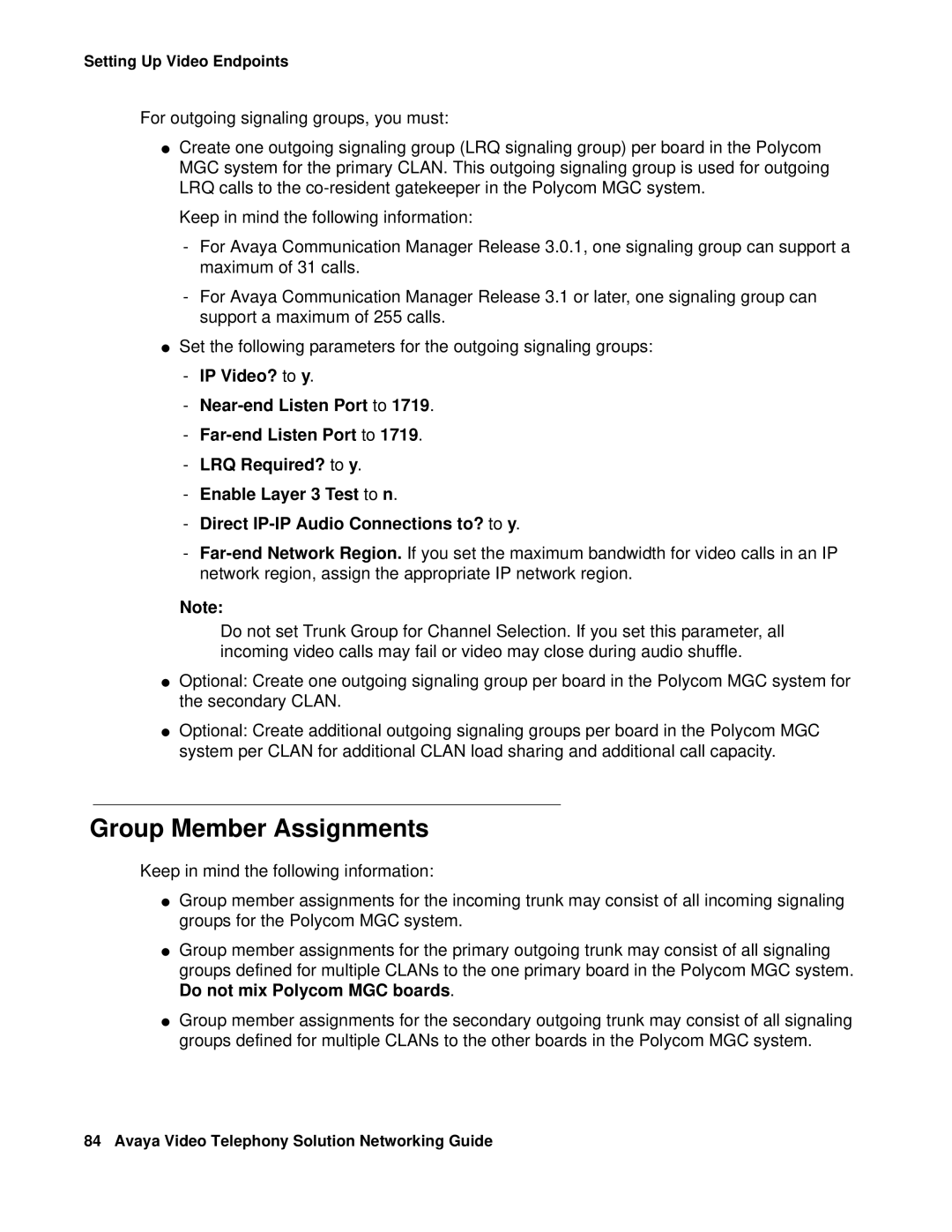Setting Up Video Endpoints
For outgoing signaling groups, you must:
●Create one outgoing signaling group (LRQ signaling group) per board in the Polycom MGC system for the primary CLAN. This outgoing signaling group is used for outgoing LRQ calls to the
Keep in mind the following information:
-For Avaya Communication Manager Release 3.0.1, one signaling group can support a maximum of 31 calls.
-For Avaya Communication Manager Release 3.1 or later, one signaling group can support a maximum of 255 calls.
●Set the following parameters for the outgoing signaling groups:
-IP Video? to y.
-
-
-LRQ Required? to y.
-Enable Layer 3 Test to n.
-Direct
-
Note:
Do not set Trunk Group for Channel Selection. If you set this parameter, all incoming video calls may fail or video may close during audio shuffle.
●Optional: Create one outgoing signaling group per board in the Polycom MGC system for the secondary CLAN.
●Optional: Create additional outgoing signaling groups per board in the Polycom MGC system per CLAN for additional CLAN load sharing and additional call capacity.
Group Member Assignments
Keep in mind the following information:
●Group member assignments for the incoming trunk may consist of all incoming signaling groups for the Polycom MGC system.
●Group member assignments for the primary outgoing trunk may consist of all signaling groups defined for multiple CLANs to the one primary board in the Polycom MGC system. Do not mix Polycom MGC boards.
●Group member assignments for the secondary outgoing trunk may consist of all signaling groups defined for multiple CLANs to the other boards in the Polycom MGC system.
84 Avaya Video Telephony Solution Networking Guide
